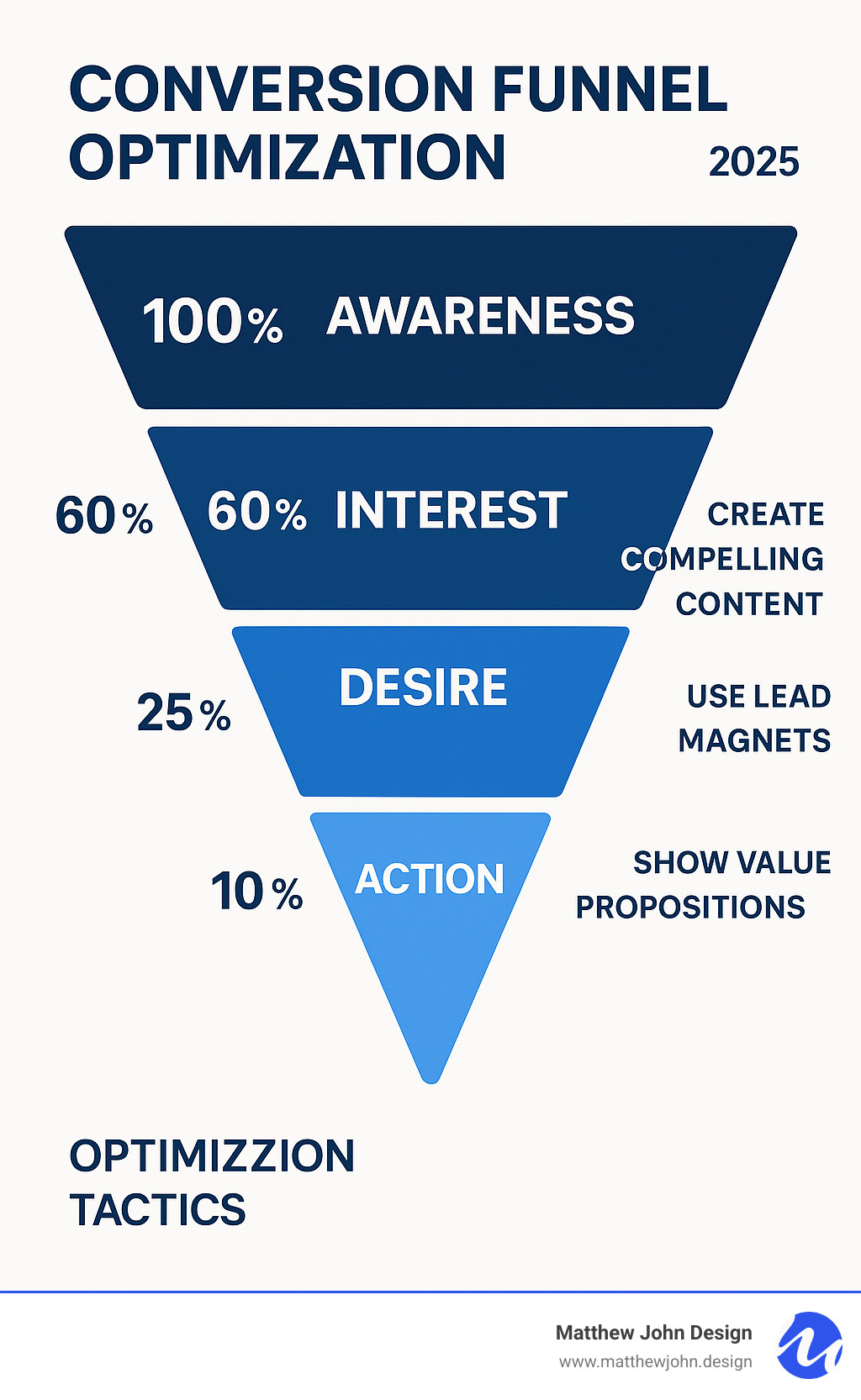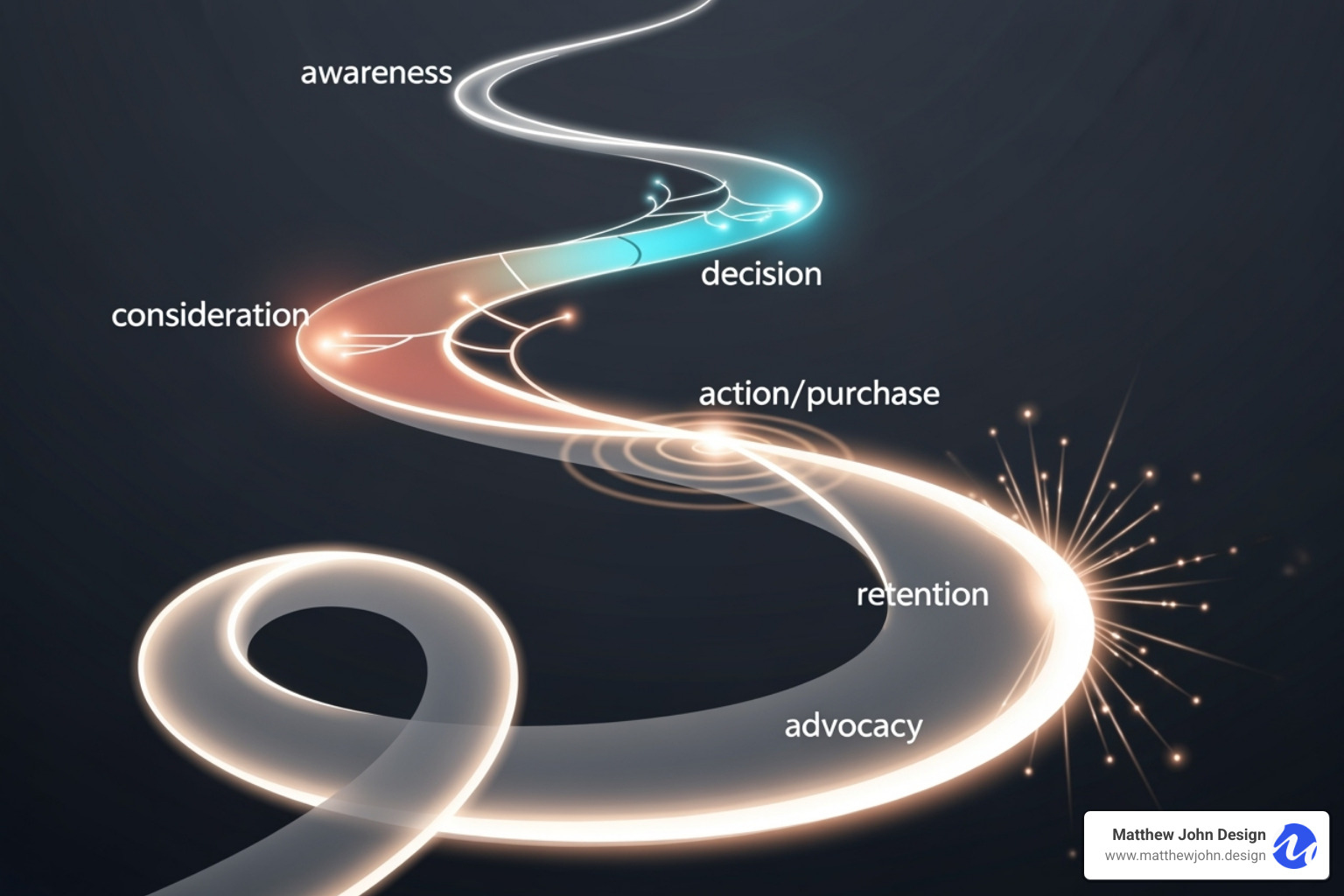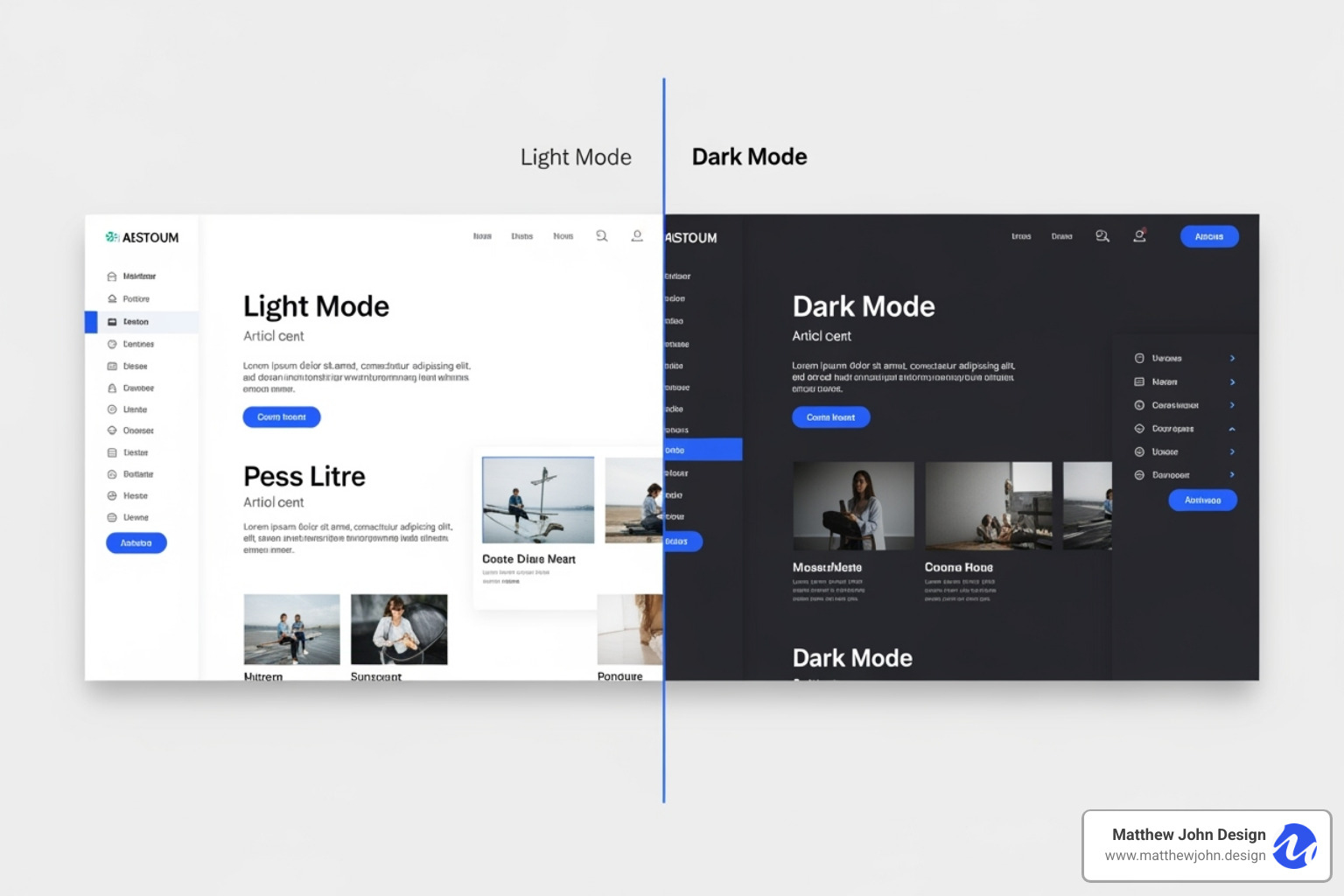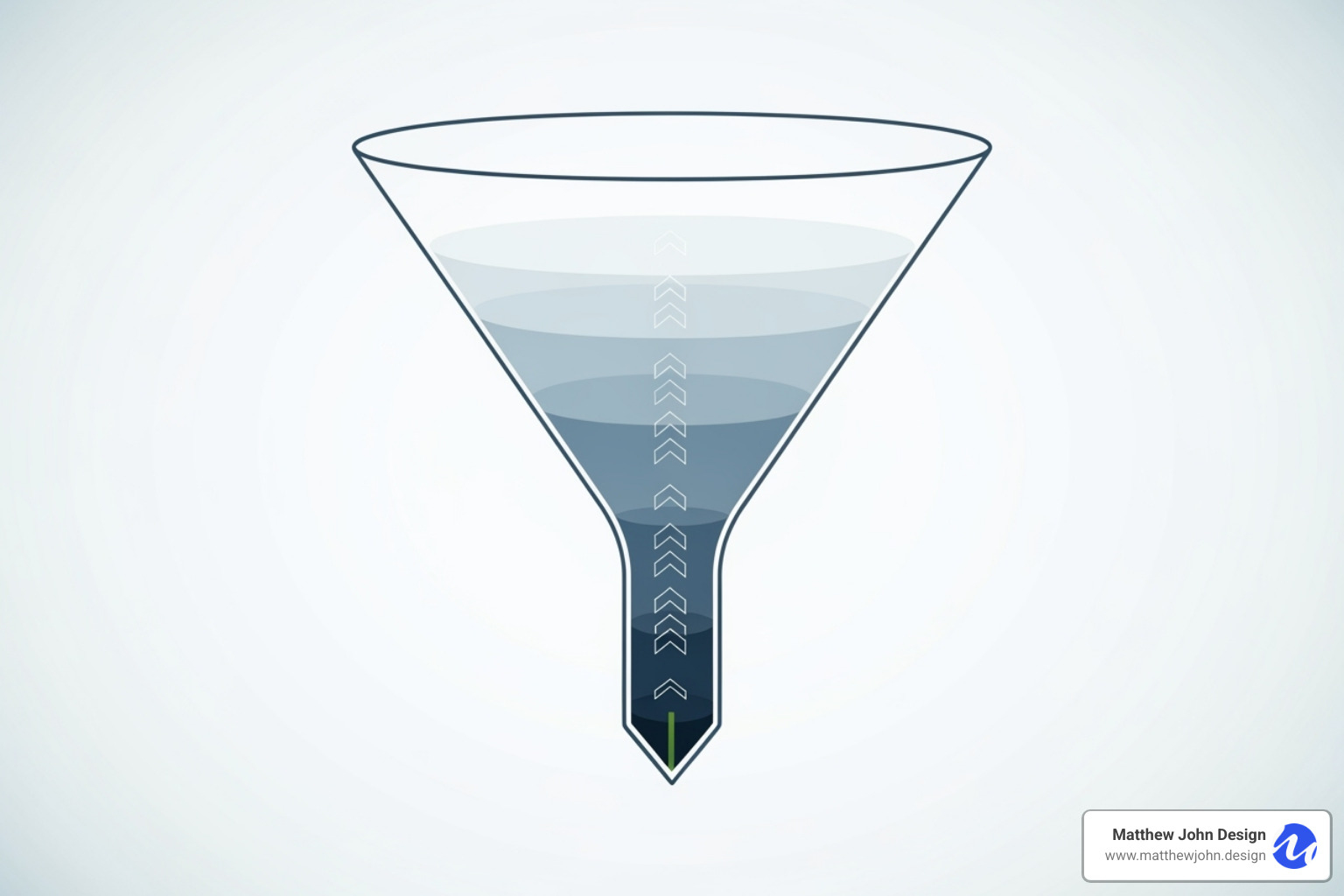Any information contained on this Website is not legal advice and should not be treated as such. You should always contact an attorney for help with your specific legal needs and issues. We may also earn a commission when you click links to our partners and purchase goods or services. For more information, read our Disclaimers Policy.
The Blueprint for Turning Visitors into Customers
Conversion funnel optimization is the strategic process of improving each stage of your customer's journey to increase the percentage of visitors who complete a desired action on your website.
Quick optimization checklist:
- Awareness: Create compelling content that attracts your target audience.
- Interest: Use lead magnets and social proof to build trust.
- Desire: Showcase clear value propositions and customer testimonials.
- Action: Simplify forms, optimize CTAs, and reduce checkout friction.
- Measure: Track drop-off points with analytics and A/B testing.
A staggering 70% of online shopping carts are abandoned before purchase. Yet research shows that changing just one word in a signup form can result in double-digit conversion increases. Your website visitors are already interested enough to click through to your site. The question is: are you guiding them effectively toward becoming customers?
Many businesses focus on driving traffic but ignore the crucial step of converting it, essentially pouring water into a leaky bucket. If your conversion funnel has gaps, you're leaving money on the table.
The good news is that small, strategic changes can have a massive impact on your bottom line. Companies that master conversion funnel optimization often see conversion rate improvements of 20-50% or more. Understanding how to optimize your conversion funnel is essential for sustainable growth.

Conversion funnel optimization helpful reading:
Understanding the Anatomy of a Conversion Funnel
Without a clear path, websites attract visitors but lose them at every step. A funnel guides visitors from their first interaction to a conversion, but many sites lack this structure, losing potential customers along the way.

A conversion funnel is a digital roadmap that guides visitors from their first interaction with your brand to becoming paying customers. It's a strategic pathway that turns casual browsers into committed buyers or subscribers.
While related to sales and marketing funnels, conversion funnel optimization focuses on any desired action—a download, a demo signup, or a purchase. A sales funnel targets the buying process specifically, while a marketing funnel covers the entire customer relationship.
The customer journey is the entire story of their experience with your brand. The conversion funnel is the key chapter where they decide to act. Most successful funnels follow the AIDA model, created by Elias St. Elmo Lewis. This framework includes four stages: Awareness, Interest, Desire, and Action.
Funnels are also categorized as Top of Funnel (TOFU), where people identify a problem; Middle of Funnel (MOFU), where they research solutions; and Bottom of Funnel (BOFU), where they make a decision. Understanding these stages shows you where to focus your efforts and fix drop-offs.
The Awareness Stage: Capturing Attention
In the awareness stage, potential customers have a problem but may not be actively looking for solutions. Your goal is to start a conversation, not to sell. Share your brand's story and explain your purpose. Find your brand's "why" and let it guide your connection with people.
Brand storytelling is key, as people buy into stories that resonate with them. At Matthew John Design, we help clients craft authentic narratives that turn strangers into prospects.
Content marketing delivers that story. Blog posts should answer your audience's questions, and your social media should feel like a knowledgeable friend. SEO ensures the right people find your content. Paid ads can amplify your reach, but they must feel helpful, not pushy. The goal is to attract genuinely interested traffic.
The Interest and Desire Stages: Nurturing Leads
Prospects now know you but aren't ready to buy; in fact, 73% of leads are not ready to be sold upon first engagement. This is where you deepen the relationship.
Lead magnets like ebooks or webinars are crucial for gathering contact information. Case studies and product demos help prospects visualize success with your solution. Social proof—testimonials, reviews, and success stories—builds the trust needed for conversion.
Email nurturing continues the conversation with personalized sequences that address concerns and highlight benefits. The key is providing value in every interaction. Building trust also requires transparency and clear communication about what happens next.
The desire stage intensifies this process. Prospects are now comparing you to alternatives. Your unique value proposition must be clear and compelling. A great user experience is essential to make these stages feel natural.
The Action Stage: Sealing the Deal
The action stage is where your work pays off, but this final step must be frictionless. Any complexity can derail the process.
Conversion occurs when someone completes your desired action, like a purchase or form submission. The checkout process must be streamlined and intuitive, as every extra step increases cart abandonment.
Your Call-to-Action (CTA) buttons need to be clear. "Get Started" or "Download Now" work better than generic phrases like "Submit." Reducing friction means minimizing form fields, offering multiple payment options, and ensuring fast load times. The final conversion should feel like a natural conclusion to the journey.
At Matthew John Design, we engineer Webflow sites with these principles in mind, ensuring that when prospects are ready to convert, nothing stands in their way.
Diagnosing the Leaks: How to Analyze Your Funnel
A leaky conversion funnel is like a bucket with holes—you lose potential customers with every step. You might drive traffic, but if your funnel has gaps, interested people are slipping away before they convert.
Conversion funnel optimization is easier once you know where the leaks are. Funnel analysis is a diagnostic tool that shows you where customers get stuck or leave. It helps you identify bottlenecks, improve user experience, boost conversion rates, and make data-driven decisions.
Before you start, ask yourself: What data am I collecting? Is it trustworthy? Is something fundamentally broken? Answering these questions ensures your optimization strategy is built on solid ground.
Mapping the Customer Journey and Setting Goals
To patch leaks, you must first find them by mapping your customer journey—every touchpoint from their first search to clicking "buy." This map identifies decision points where customers might proceed or leave. Touchpoints include social media posts, blog articles, landing pages, and checkout.
Next, define success by setting macro conversions (your ultimate goal, like a purchase) and micro conversions (smaller steps, like a newsletter signup). Google Analytics Goal Flow is helpful for this. You can set up a goal in Google Analytics to track actions and see how people move through your site. The key is to identify the actual user paths, not just the ones you intended.
Using Analytics to Find Drop-Off Points
Google Analytics 4 offers funnel visualization reports that show exactly how many people move from one step to the next. A large drop-off between two stages indicates a leak. For example, if 1,000 people visit a product page but only 50 complete the purchase, you've found a major problem area.
Conversion rate tracking helps you monitor these patterns over time. Customer segmentation can reveal different behaviors between mobile and desktop users or on weekdays versus weekends. Also, identifying high-exit pages is crucial. These are pages where users frequently leave your site, often because a clear next step or compelling benefit is missing.
Beyond Google Analytics, Hotjar is a great alternative for funnel visualization that adds visual context. Analytics tells you what happened; tools like Hotjar show you how.
Understanding the "Why" with Qualitative Data
Numbers tell you where a problem is, but not always why. Qualitative data provides the human story behind the stats.
Session recordings let you watch real users steer your site, revealing where they hesitate, what they click, and when they give up. User surveys and customer feedback offer direct insights. Exit-intent surveys can ask people why they're leaving as it happens.
Heatmaps show where users click, scroll, and hover. If people are trying to click on non-clickable text, it's a clear sign of confusion. Usability testing involves watching people attempt to complete tasks on your site. Jakob Nielsen's introduction to usability offers great insights into this process.
The magic happens when you combine quantitative data (the "what") with qualitative data (the "why"). If analytics show form abandonment and recordings reveal a confusing field, you have both the problem and a path to the solution.
Our Webflow sites come with robust analytics integration, making it easy to connect these tools and understand user behavior from day one.
A Step-by-Step Guide to Conversion Funnel Optimization
Once you've diagnosed the leaks, it's time to plug them. This is where conversion funnel optimization turns insights into actionable improvements. Even small tweaks, like changing one word on a signup form, can lead to double-digit conversion increases.

Think of optimization like fine-tuning an instrument; each adjustment contributes to a better result. The process involves continuous, data-driven experimentation rather than a complete overhaul. You can learn more about CRO strategies on our blog for deeper insights.
Optimizing Landing Pages and User Experience
Your landing pages are where visitors arrive with intent. Your job is to guide them seamlessly to the next step.
A high-converting landing page needs a clear value proposition. Visitors should understand what you offer and why it matters within seconds. Compelling headlines and copy should use action-oriented language that highlights benefits, not just features. For example, instead of "Advanced Analytics Dashboard," try "See Which Marketing Campaigns Make You Money."
High-quality visuals should be relevant and support your message. Mobile responsiveness is not optional, as a large portion of your visitors use smartphones. Website speed is also non-negotiable; research shows that a 1-second delay can cause a 7% drop in conversions. You can check your site's Core Web Vitals with Google's PageSpeed Insights. Our Webflow sites are built for speed, but for video content, we recommend third-party hosting like YouTube, Vimeo, or Vidzflow, as Webflow only supports background videos up to 30 MB.
Crafting Irresistible CTAs and Frictionless Forms
Your Call-to-Action (CTA) is the bridge between interest and action. Action-oriented language is key. Instead of "Submit," use benefit-driven phrases like "Get Your Free Marketing Audit." Button color and placement should make your CTA visually distinct and easy to find.
Reducing form fields is critical, as long forms are a major cause of cart abandonment. Ask only for essential information. For longer forms, multi-step forms break the process into smaller, less intimidating chunks, which can significantly increase conversions.
Eliminating CAPTCHA removes another potential roadblock. While used for security, they can deter legitimate users. Explore user-friendly alternatives to avoid negatively impacting your conversion rates, as detailed in this article about how CAPTCHAs can affect conversion rates.
Building Trust and Leveraging Psychological Triggers
Trust is the foundation of every conversion. Without it, people won't feel confident taking action.
Social proof, such as customer reviews, testimonials, and case studies, shows potential customers that others have had positive experiences. Trust badges and security elements, like BBB certifications or HTTPS encryption, provide immediate visual reassurance.
Guarantees reduce perceived risk. Money-back or satisfaction guarantees make the decision feel safer for hesitant prospects. Exit-intent pop-ups can offer a last-minute discount or resource to recover visitors who are about to leave.
Psychological triggers can also be effective. The Decoy Effect, as illustrated in Dan Ariely's famous experiment, uses a third, less attractive option to make your preferred choice seem more appealing. Positive framing focuses on benefits ("Find which campaigns generate the highest ROI") rather than problems ("Stop losing money").
The Role of A/B Testing in Conversion Funnel Optimization
The golden rule of optimization is to always be testing. A/B testing eliminates guesswork by showing two versions of a page to different audience segments to see which performs better.
You can test almost anything: headlines, copy, CTAs, images, videos, form fields, and page layouts. The goal is to find what makes the biggest difference with the smallest adjustment. Combining quantitative A/B test results with qualitative insights provides a comprehensive understanding of what drives conversions.
Several tools can help you run experiments, including VWO, Optimizely, and AB Tasty. Our Webflow sites are designed for easy integration with these platforms, allowing clients to test and optimize without developer delays. By consistently testing, you turn your funnel into a well-oiled conversion machine.
Frequently Asked Questions about Conversion Funnel Optimization
We get these questions all the time from clients diving into conversion funnel optimization. Here are some straight answers.
What is the difference between a conversion funnel and a customer journey?
Think of the customer journey as the entire, often unpredictable, story of someone's relationship with your brand. It can be non-linear, with multiple touchpoints over a long period. Someone might find you through a friend, check your Instagram months later, read a blog, and then see an ad before finally buying.
A conversion funnel is a specific, engineered path within that journey. It's the sequence you design to guide a user from a specific entry point (like an ad) to a single conversion goal (like a purchase). While the customer journey is messy and organic, the conversion funnel is your structured highway to a specific action.
What are the most common reasons for funnel drop-offs?
People often disappear before converting for several common reasons. Identifying these pain points is the first step to fixing them.
- Complicated checkout processes: Too many form fields, unclear instructions, or forcing account creation are major deterrents.
- Unexpected costs: Surprise shipping fees, taxes, or other charges added at the end kill conversions.
- Poor website performance: Slow load times are frustrating. A one-second delay can cause a 7% drop in conversions.
- Lack of trust signals: A site without reviews, security badges, or a clear privacy policy makes users nervous.
- Unclear value propositions: If visitors can't understand what you offer and why it matters in seconds, they will leave.
- Mobile optimization issues: A funnel that is difficult to steer on a phone will lose a large portion of potential customers.
How often should I optimize my conversion funnel?
Conversion funnel optimization is not a one-time task; it's an ongoing process, like tending a garden. The digital landscape, user behavior, and competitor actions are constantly changing.
You should be continuously monitoring and testing. Set aside time each month to review analytics, identify new drop-off points, and form hypotheses for improvement. Running regular A/B tests on elements like headlines or button colors can lead to significant incremental gains that compound over time.
Gathering fresh user feedback through surveys and usability tests helps you stay connected to your audience's needs. Think of optimization as routine maintenance for your business's engine. The businesses that treat it as an ongoing process see the biggest long-term gains.
Conclusion: Build a Funnel That Converts
Returning to the leaky bucket analogy, you now know how to spot the holes, understand their cause, and seal them. That is the power of conversion funnel optimization.
We've covered the building blocks of a high-converting funnel: understanding the AIDA model, diagnosing problems with quantitative and qualitative data, and implementing tactical optimizations like improving landing pages, CTAs, and trust signals through A/B testing.
The power of this process is its compound effect. Small improvements—faster load times, a clearer headline, a simpler form—stack on top of each other, turning a mediocre funnel into a conversion machine.
However, optimization is not a one-and-done project. It's an ongoing commitment to understanding your customers. The businesses that thrive are those that stay curious, keep testing, and continuously improve their customer experience.
At Matthew John Design, we've seen how strategic design and conversion-focused development can transform a business. Our scalable Webflow sites are engineered with reusable components and intuitive CMS structures, enabling your marketing team to launch pages and test approaches without developer delays.
Ready to turn your website into a customer-generating engine? Start building a high-converting website with our expert design and development services and watch your conversion rates climb.


.jpg)